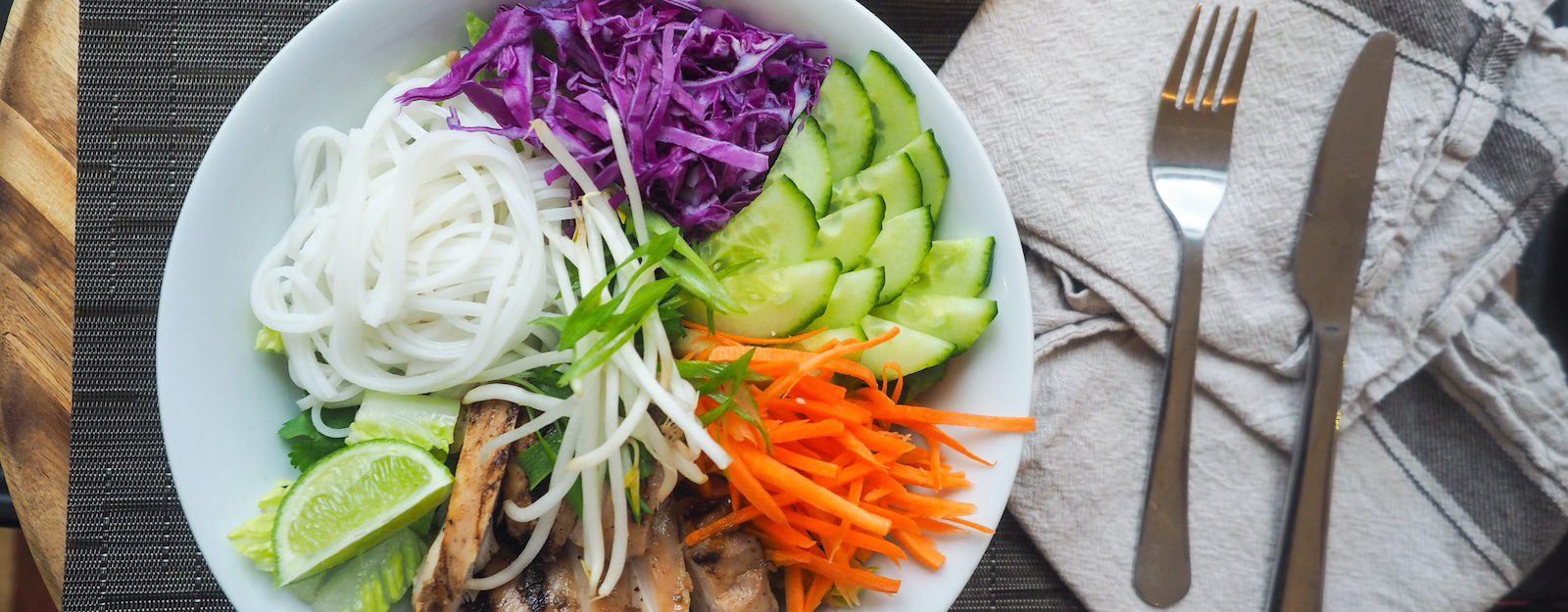Here are some kitchen products that will make your transition to healthier home cooking easier. You may already have many of these supplies, but some may need an update. For example, sharp knives will make cutting crisp fruits and vegetables safer and easier. Here are some of the supplies the Love.Life nutrition team recommends:
- A good blender
- Cutting boards (separate for ready-to-eat food and raw meat)
- Pots and pans
- Baking sheets
- Mixing bowls
- Strainer or colander
- Can opener
- Measuring spoons and cups
- Vegetable peeler
- Sharp knives
- Glass reusable water bottle
- Glass containers for leftovers or meal prep containers
- Spatula
- Whisk
- Kitchen scissors
- Tongs
- Oven mitts
- Citrus juicer
Consider purchasing, depending on your favorite things to cook:
- Air fryer
- Pressure Cooker
- If you are interested in multiple appliances, consider searching for a product with multiple functions. For example, an air fryer that is also a pressure cooker.
- Sous Vide
- Crockpot
- Food processer
- Toaster oven
- Lettuce spinner
- Electric griddle
- Food steamer
- Electric mixer
- Mandolin slicer
- Rice cooker
- Popcorn popper
- Cast iron skillet
- Muffin tin
- Tofu press
- Bread maker
- Tea kettle
- Soda Stream
- Coffee maker/ cold brew coffee press
- Many of these appliances aren’t needed to lead a more plant-based lifestyle, but they may be helpful for developing healthier habits. For example, if you typically buy sweetened cold brew coffee daily, you may want to consider buying a coffee press to make cold brew at home without unwanted additives.
What can be tossed or donated?
As you work towards adding more whole foods to your diet, you simultaneously begin to limit or eliminate other components of your diet. While cleaning out your kitchen, you will come across food that you know needs to go, we call these “easy goners,” but keep in mind that some of these foods may not be easy to part with! Revamping your kitchen is just one step in moving towards a more plant-based whole foods lifestyle, but it is a big step. If you are not ready to totally revamp all your eating habits, a great place to start is putting the “easy goners” that fall under calorie-dense or packaged food, such as your go-to processed cookies or potato chips, in a separate section and work towards minimizing the section size. Next, work towards finding substitutes to swap in for your favorite processed foods or regular meals. Lastly, if you are working towards becoming fully plant-based, move on to “the hard ones.”
Whenever possible, consider donating the food that no may no longer fit into your lifestyle to your local food pantry, excluding expired food which should be composted or thrown out.
- Easy goners
- Expired or old food
- Can it be composted?
- Calorie-dense food you don’t want to keep
- Think: Groceries you bought for guests, food gifts, items you bought and did not like, etc.
- Packaged food with artificial ingredients such as…
- Artificial colors
- Artificial flavorings
- Artificial sweeteners
- Hydrogenated oils
- Expired or old food
- Swap it out
- Change out processed, non-whole foods with plant-based substitutes. Swap:
- White flours for whole grain flours
- Boxes of mac and cheese for whole grain pasta made with butternut squash, cashew “cheese” sauce
- Fruit roll-ups for single-ingredient fruit leather
- White bread and pasta for whole grain bread and plant-based pasta, such as chickpea pasta or zucchini noodles
- Brownie mix for a homemade date-based brownie recipe
- Soda pop for sparkling water
- Sugary cereal for maple overnight oats
- Fried tortilla chips for whole grain crackers
- Potato chips for air-popped popcorn
- Change out processed, non-whole foods with plant-based substitutes. Swap:
- The hard ones … work up to this, it won’t necessarily happen overnight.
- Your favorite processed, non-whole foods
- Start by limiting these items and work towards eliminating them if possible. Challenge yourself to move further down the whole foods continuum.
- Search for whole-food substitutes that are just as satisfying.
- Save can’t-live-without favorites for special occasions.
- Your favorite processed, non-whole foods

